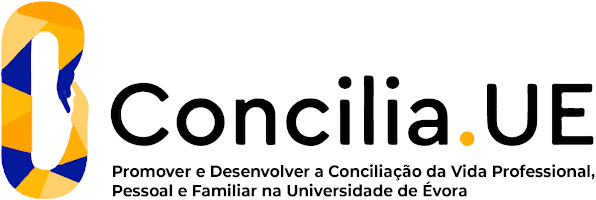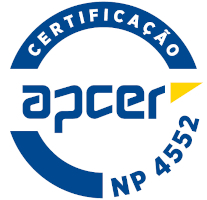2025
Spanish I
Name: Spanish I
Code: LLT13840L
3 ECTS
Duration: 15 weeks/78 hours
Scientific Area:
Linguistics
Teaching languages: Portuguese, Spanish
Languages of tutoring support: Portuguese, Spanish
Regime de Frequência: Presencial
Presentation
Spanish I unit allows students to acquire basic language skills in the context of tourism services.
Sustainable Development Goals
Learning Goals
(CEFR Level: A1)
I Objectives:
• understand and use familiar everyday expressions and very basic phrases aimed at the satisfaction of needs of a concrete type; introduce him/herself and others and ask and answer questions about personal details such as where he/she lives, people he/she knows and things he/she has; interact in a simple way provided the other person talks slowly and clearly and is prepared to help.
II. Competences:
A. Oral production: can produce simple mainly isolated phrases about people and places.
B. Written production: can write simple isolated phrases and sentences.
C. Listening comprehension: can follow speech which is very slow and carefully articulated, with long pauses for him/her to assimilate meaning.
D. Reading comprehension: can understand very short, simple texts a single phrase at a time, picking up familiar names, words and basic phrases and rereading as required.
I Objectives:
• understand and use familiar everyday expressions and very basic phrases aimed at the satisfaction of needs of a concrete type; introduce him/herself and others and ask and answer questions about personal details such as where he/she lives, people he/she knows and things he/she has; interact in a simple way provided the other person talks slowly and clearly and is prepared to help.
II. Competences:
A. Oral production: can produce simple mainly isolated phrases about people and places.
B. Written production: can write simple isolated phrases and sentences.
C. Listening comprehension: can follow speech which is very slow and carefully articulated, with long pauses for him/her to assimilate meaning.
D. Reading comprehension: can understand very short, simple texts a single phrase at a time, picking up familiar names, words and basic phrases and rereading as required.
Contents
Greetings and saying goodbye.
Introductions. Physical and psychological description.
Daily routine and leisure activities.
Tastes and preferences.
States of mind and health.
Talking about future plans.
Describing people and places using the Past tense.
Explaining a situation using the Past tense.
Indicating agreement and disagreement.
Contents
Personal pronouns in Spanish. Uses of tú / usted. Ways of greeting and introduction.
The article. Uses.
Interrogatives.
The names in Spanish: gender and number. Plural construction.
Demonstratives.
The presente de indicativo (regular and irregular verbs).
The pretérito imperfecto de indicativo (regular and irregular verbs).
The futuro simple (regular and irregular verbs).
Grammatical agreement between noun and adjective.
Cardinal and ordinal numbers.
The possessives. Ways, uses and position.
Main auxiliairy verbs in Spanish: Ser / Estar / Haber.
Several prepositions and adverbs of place.
Introductions. Physical and psychological description.
Daily routine and leisure activities.
Tastes and preferences.
States of mind and health.
Talking about future plans.
Describing people and places using the Past tense.
Explaining a situation using the Past tense.
Indicating agreement and disagreement.
Contents
Personal pronouns in Spanish. Uses of tú / usted. Ways of greeting and introduction.
The article. Uses.
Interrogatives.
The names in Spanish: gender and number. Plural construction.
Demonstratives.
The presente de indicativo (regular and irregular verbs).
The pretérito imperfecto de indicativo (regular and irregular verbs).
The futuro simple (regular and irregular verbs).
Grammatical agreement between noun and adjective.
Cardinal and ordinal numbers.
The possessives. Ways, uses and position.
Main auxiliairy verbs in Spanish: Ser / Estar / Haber.
Several prepositions and adverbs of place.
Teaching Methods
(1) direct exposure to authentic use of language (through videos, written texts newspapers, magazines, etc. Internet, CD-ROM, among others);
(2) direct participation in communicative interaction;
(3) presentations, explanations, exercises/exploitation activities;
(4) translation (native language/foreign language/native language)
(5) individual, pair and group working;
(6) contribution to formal and informal discussions;
(7) guided study;
(8) autodidactically, by self-study.
Students may choose between two modes of assessment: (1) continuous or (2) exam.
(1) Continuous assessment: a. Written quiz (35%); b. Oral quiz (25%); c. Assignments, throughout the semester, in and at home (40%);
(2) Exam: a. Written exam (60%); b. Oral exam (40%).
(2) direct participation in communicative interaction;
(3) presentations, explanations, exercises/exploitation activities;
(4) translation (native language/foreign language/native language)
(5) individual, pair and group working;
(6) contribution to formal and informal discussions;
(7) guided study;
(8) autodidactically, by self-study.
Students may choose between two modes of assessment: (1) continuous or (2) exam.
(1) Continuous assessment: a. Written quiz (35%); b. Oral quiz (25%); c. Assignments, throughout the semester, in and at home (40%);
(2) Exam: a. Written exam (60%); b. Oral exam (40%).
Teaching Staff
- Alberto José Iglesias Martín
- Susana Gil Llinas [responsible]





















